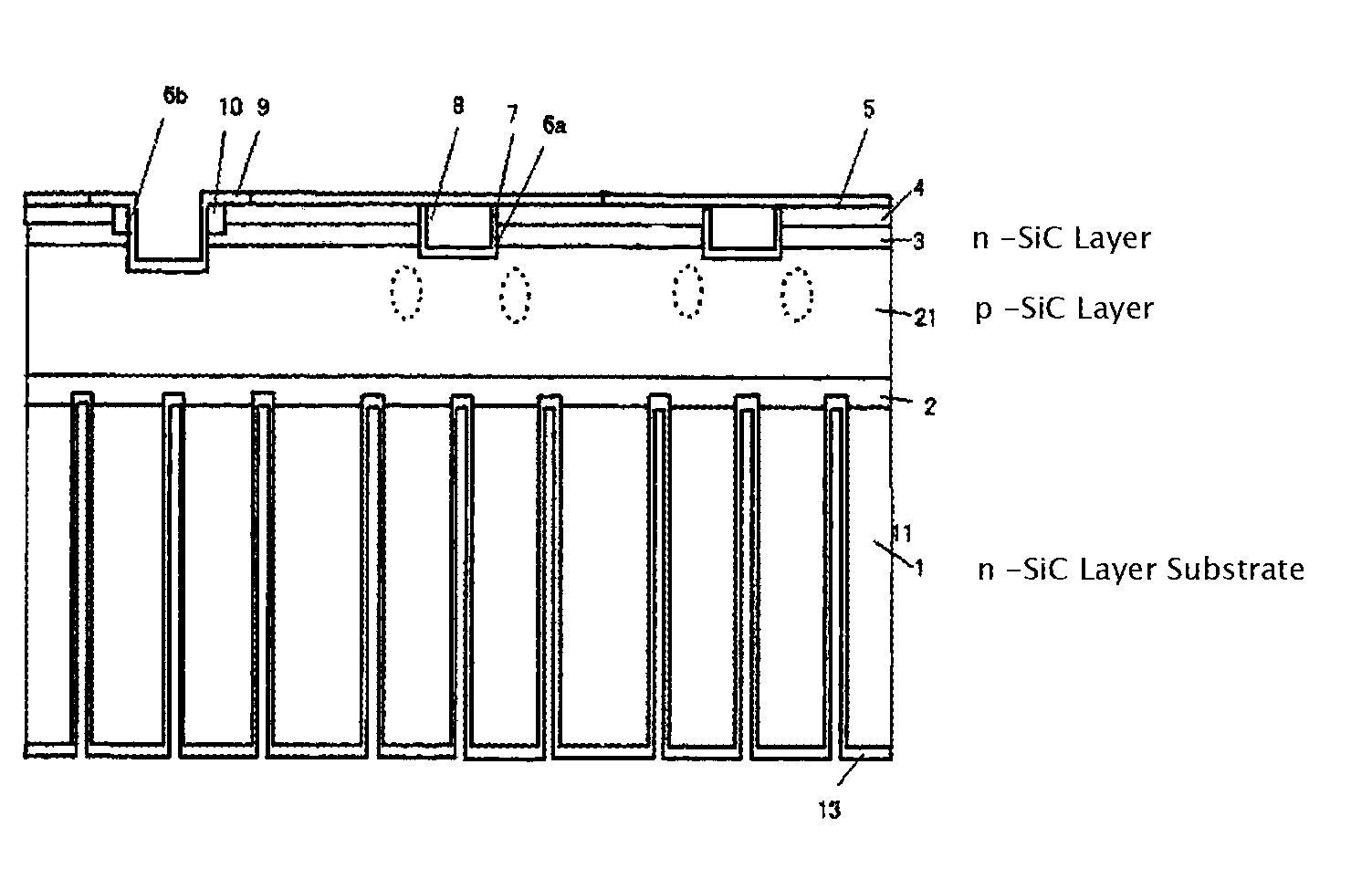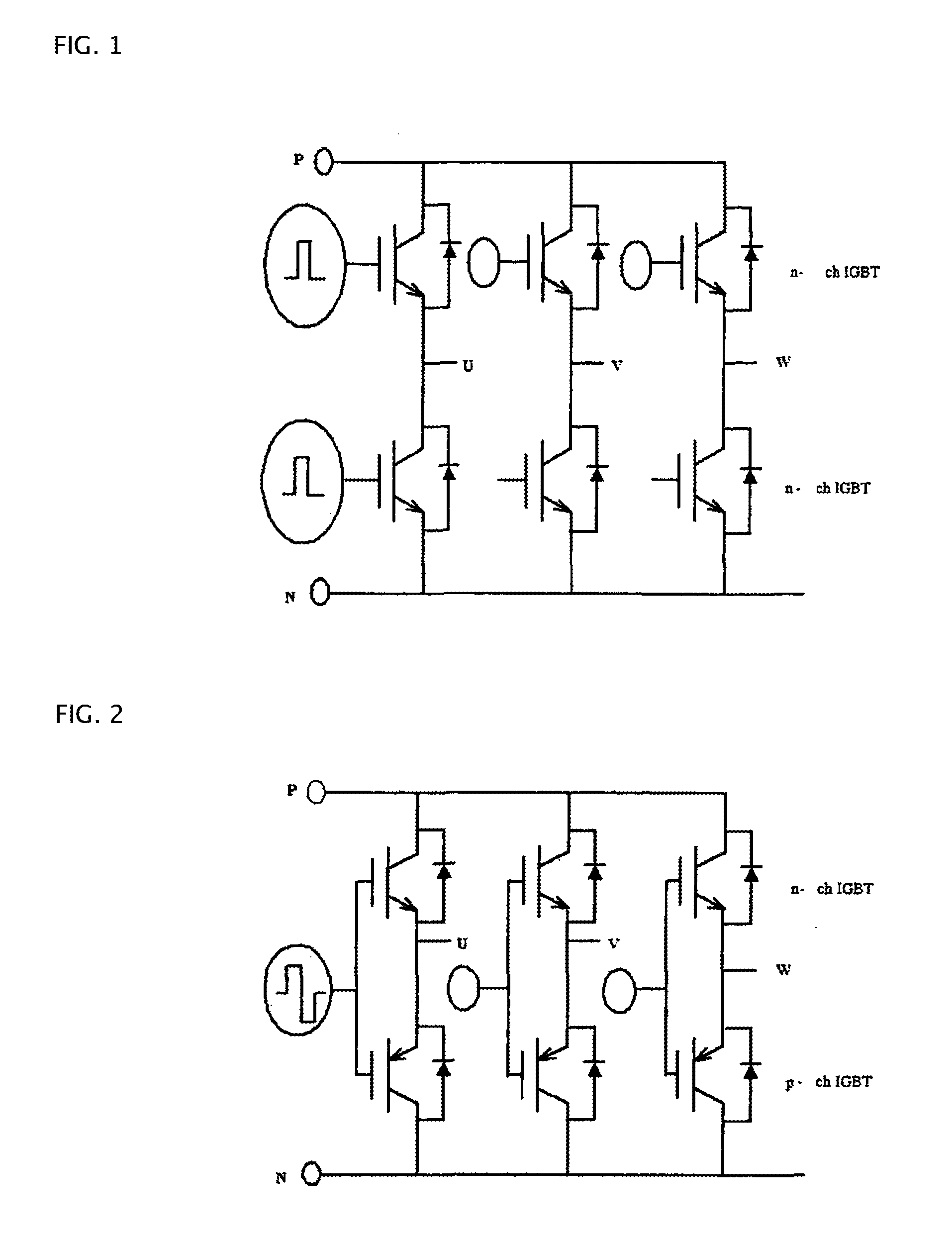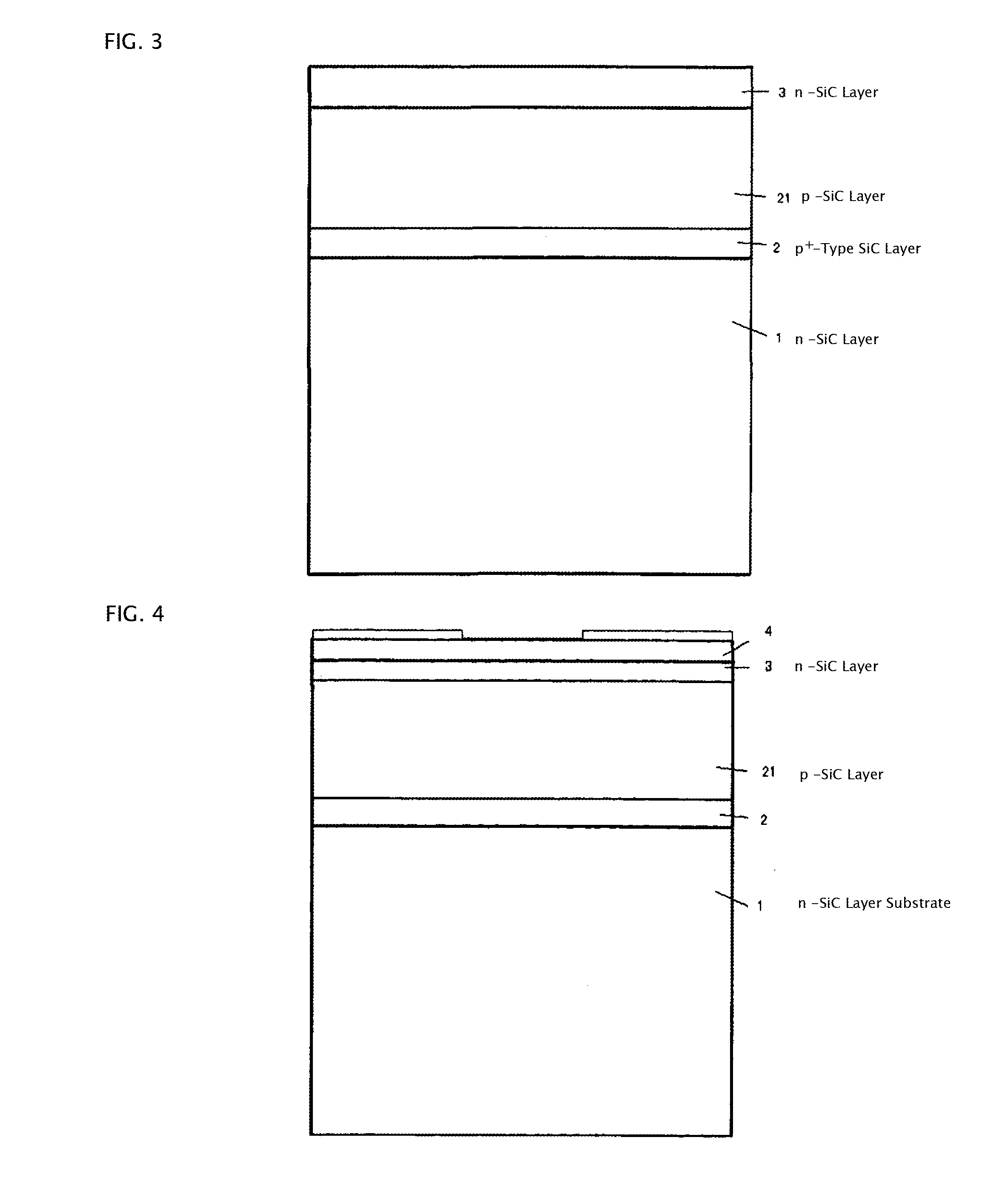P-channel silicon carbide mosfet
a silicon carbide and mosfet technology, applied in the direction of semiconductor devices, diodes, electrical apparatus, etc., can solve the problems of increasing device size, increasing cost, and aforementioned complementary igbt modules being currently unavailable on the market, and achieves low on-resistance characteristics, high avalanche breakdown tolerance, and high practical use value
- Summary
- Abstract
- Description
- Claims
- Application Information
AI Technical Summary
Benefits of technology
Problems solved by technology
Method used
Image
Examples
embodiment 1
[0032]Embodiment 1 of the invention will be described below with reference to FIGS. 3 to 7. Incidentally, in Embodiment 1, a trench MOSFET with a withstand voltage of 1200 V is provided as a vertical SiC p-channel MOSFET. First, an n-type SiC semiconductor substrate 1 (referred to as n-SiC substrate in FIG. 3) with a thickness of 400 μm is prepared. In Embodiment 1, the substrate 1 is provided as a high-resistance SiC semiconductor substrate containing about 2×1014 cm3 of nitrogen as an impurity. However, in this embodiment, use of the high-resistance SiC semiconductor substrate is not essential, and a low-resistance SiC semiconductor substrate is also usable for a semiconductor substrate. A high impurity concentration p+-type SiC layer 2 containing about 1.0×1019 cm−3 of an impurity and a p-type base layer 21 (referred to as p-SiC layer 21 in FIG. 3) containing about 1.0×1016 cm−3 of an impurity (the semiconductor layers described hereinafter are all SiC layers if there is no parti...
embodiment 2
[0050]Embodiment 2 will be described on a trench MOSFET with a withstand voltage of 1200 V in the case where a p-type SiC substrate is used as an SiC substrate. Embodiment 2 is different from Embodiment 1 in the polarity and specific resistance (resistivity) of the SiC substrate. First, an aluminum-doped p-type SiC substrate was prepared. In this embodiment, a p-type SiC substrate containing an impurity concentration of about 2×1018 cm−3 was used. The specific resistance of the p-type SiC substrate was 7 Ωcm which was far lower than that of the n-type SiC substrate described in Embodiment 1. The element forming process after that was performed in the same manner as in Embodiment 1. The chip size was 3 mm square, the area of the active portion was 7.85 mm2, and the rating current was 10 A. On-resistance (RonA) exhibited a sufficiently low value of 2.56 mΩcm2. The initial element withstand voltage was 1258 V which exhibited sufficiently good characteristic of a 1200 V element. When I-...
embodiment 3
[0052]In a p-type SiC substrate with low resistance and low crystal defect density, it is however unnecessary to form deep third trenches in the other surface of the substrate in the aforementioned manner. In this case, an MOSFET having a layer structure composed of a p-type SiC semiconductor substrate 1, a p-type base layer 21 with a low impurity concentration formed on the p-type SiC semiconductor substrate 1, and an n-type base layer 3 formed on the p-type base layer 21 may be produced in the same manner as a usual MOSFET.
[0053]Embodiment 3 will be described on a trench MOSFET (FIG. 13) with a withstand voltage of 1200 V in the case where a low-resistance p-type SiC substrate is used as the SiC semiconductor substrate 1. Embodiment 3 is different from Embodiment 2 in that the specific resistance of the p-type SiC in Embodiment 3 is far lower. As a result, Embodiment 3 does not require the third trenches formed in the rear surface of the p-type SiC substrate in Embodiments 1 and 2...
PUM
 Login to View More
Login to View More Abstract
Description
Claims
Application Information
 Login to View More
Login to View More - R&D
- Intellectual Property
- Life Sciences
- Materials
- Tech Scout
- Unparalleled Data Quality
- Higher Quality Content
- 60% Fewer Hallucinations
Browse by: Latest US Patents, China's latest patents, Technical Efficacy Thesaurus, Application Domain, Technology Topic, Popular Technical Reports.
© 2025 PatSnap. All rights reserved.Legal|Privacy policy|Modern Slavery Act Transparency Statement|Sitemap|About US| Contact US: help@patsnap.com



